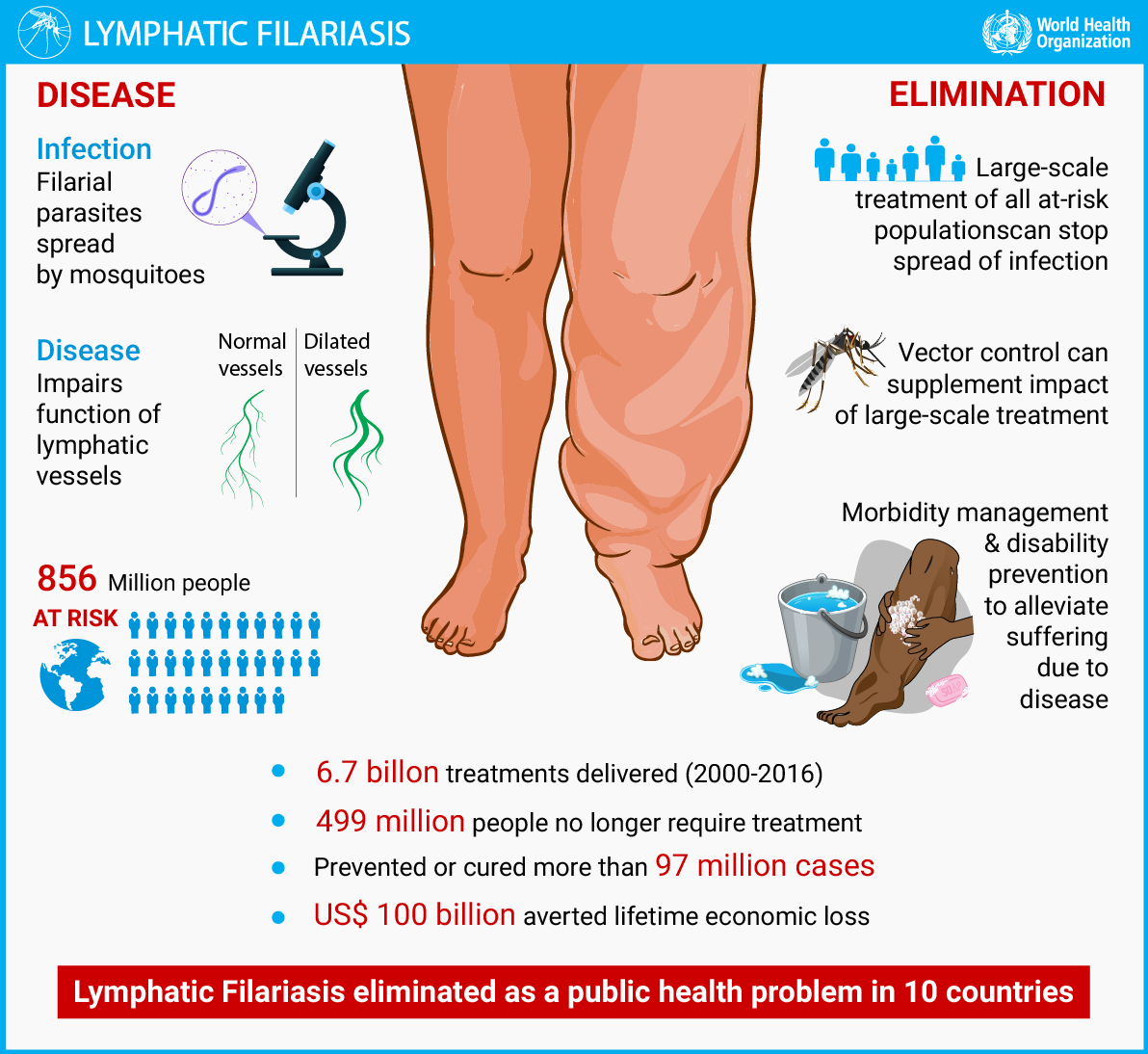Jharkhand Switch to Hindi
Lymphatic Filariasis
Why in News?
Recently, the Union Minister of State for Health and Family Welfare launched the first phase of the Bi-annual Nationwide Mass Drug Administration (MDA) campaign for Lymphatic filariasis (LF) elimination.
Key Points
- Lymphatic filariasis, commonly known as elephantiasis, is a Neglected Tropical Disease (NTD) caused by infection with filarial parasites transmitted through mosquitoes.
- In 2021, approximately 882.5 million people in 44 countries lived in areas requiring preventive chemotherapy to halt the spread of infection.
- LF is a serious public health problem in India. Currently, there are 345 lymphatic filariasis endemic districts in 20 states and union territories of the country.
- 75% of MDA districts are from 5 states Bihar, Jharkhand, UP, Odisha and Telangana.
- LF is more prevalent among the urban poor and affects all segments of the rural population.
- The infection starts in childhood and accumulates through adulthood, resulting in irreversible chronic disease conditions.
- The disease inflicts stigma, mental suffering, social deprivation and economic loss and is a major cause of poverty in the affected communities.
- It is caused by infection with parasites classified as nematodes (roundworms) of the family Filariodidea. There are 3 types of these thread-like filarial worms:
- Wuchereria bancrofti (responsible for 90% of the cases)
- Brugia malayi (causes most of the remainder of the cases)
- Brugia timori (which also causes the disease)
- India's Initiatives:
- MDA Campaign twice a year synchronized with National Deworming Day (10th Feb and 10th August)
- India is committed to eliminating LF by 2027, three years before the global target.




%20MPPCS%202025%20Desktop%20E.jpg)
%20MPPCS%202025%20Mobile%20E%20(1).jpg)










.png)
.png)











 PCS Parikshan
PCS Parikshan


